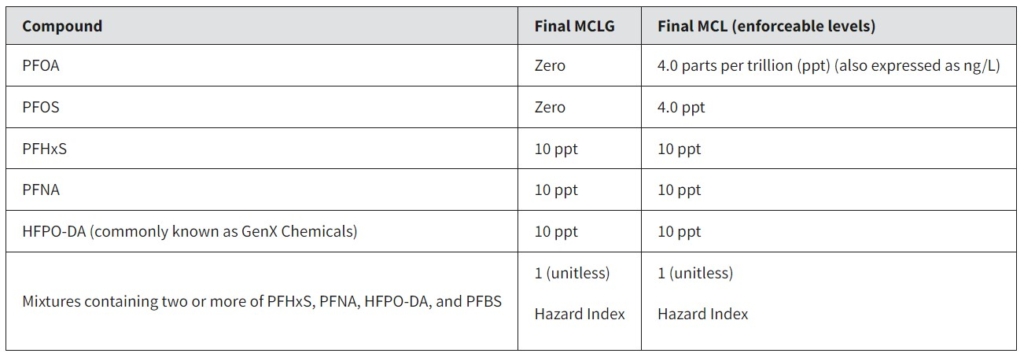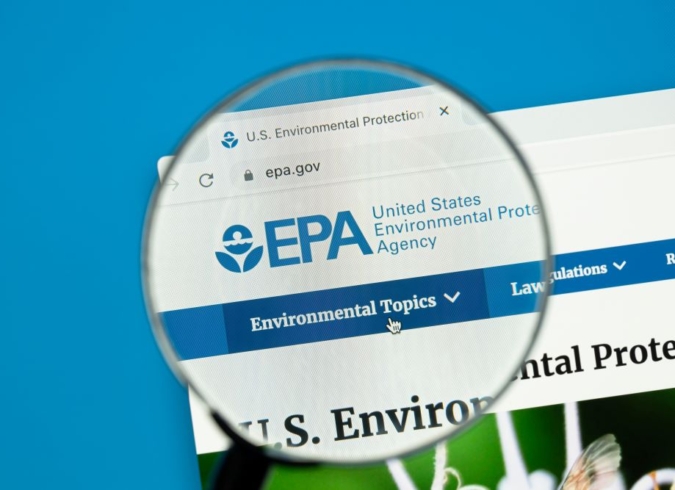The U.S. Environmental Protection Agency (EPA) set our environmental world abuzz this week when they finalized a National Primary Drinking Water Regulation (NPDWR) establishing legally enforceable Maximum Contaminant Levels (MCLs) for six PFAS in drinking water.
PFOA, PFOS, PFHxS, PFNA, and HFPO-DA as contaminants with individual MCLs, and PFAS mixtures containing at least two or more of PFHxS, PFNA, HFPO-DA (GenX), and PFBS using a Hazard Index MCL to account for the combined risk of these PFAS in drinking water. The EPA also finalized health-based, non-enforceable Maximum Contaminant Level Goals (MCLGs) for these PFAS, with the MCLGs for PFOA and PFOS set to zero. In this action, the EPA went a little further than what they proposed last year by establishing independent MCLs for PFHxS, PFNA, and GenX, in addition to including these compounds in the novel Hazard Index formula. Public water systems will have five years to demonstrate compliance with the MCLs, although the legal challenges likely to be brought against the EPA could extend deadlines (or modify values). As engineers and scientists, it will be interesting to observe the course of events that ensue, especially in conjunction with the current challenge to the Chevron deference doctrine that has granted considerable latitude to the EPA on technical matters on the basis of reasoned decision-making. To what degree will the scientific underpinnings of the PFAS MCLs be explored by the courts?
Notwithstanding legal machinations, we now enter the realm in which the EPA’s proposed low part-per-trillion standards are a reality. MCLs have ramifications that extend far beyond their direct applicability to public water systems. As examples, the MCLs become potentially Applicable or Relevant and Appropriate Requirements (ARARs) at Superfund sites – irrespective of their hazardous chemical status, and become legislated groundwater standards in numerous states, which will affect hazardous waste site investigations and cleanups almost immediately. The new MCLs are also likely to affect permit discharge requirements under the Clean Water Act, as well as cascading to many other programs and requirements. Especially challenging will be how to incorporate the Hazard Index MCL into state programs and permit limits. In short, the realities of the PFAS MCLs are about to set in to our work and the needs of our clients, and they may be profound.

Posted In: Articles
Tagged In: Development, PFAS, Research, USEPA







